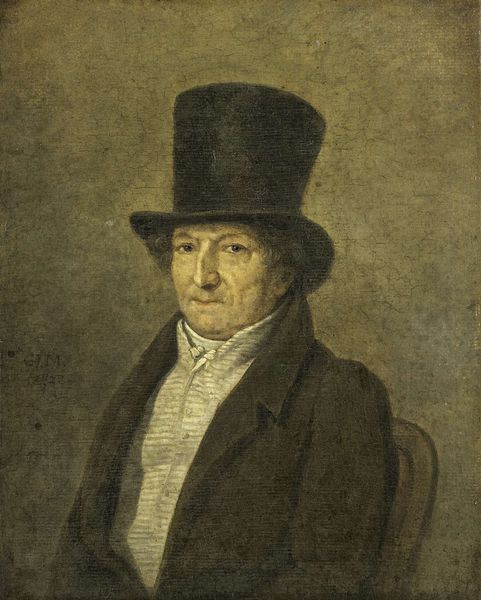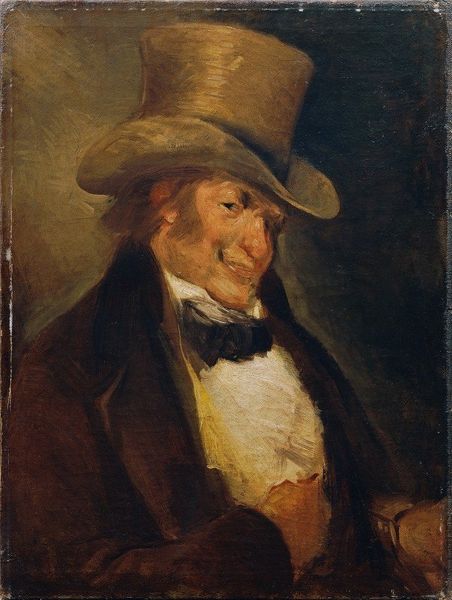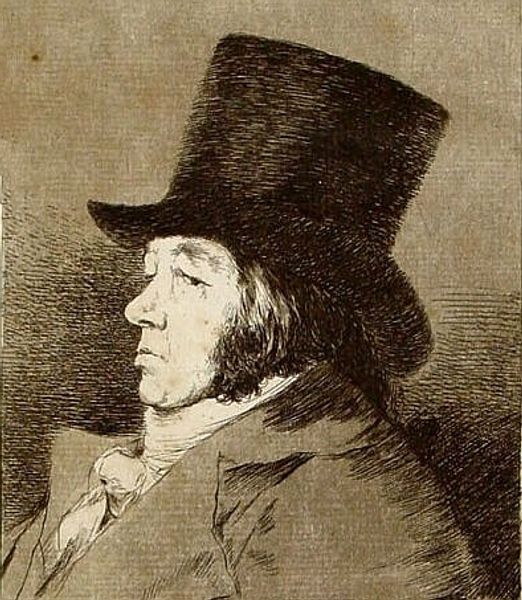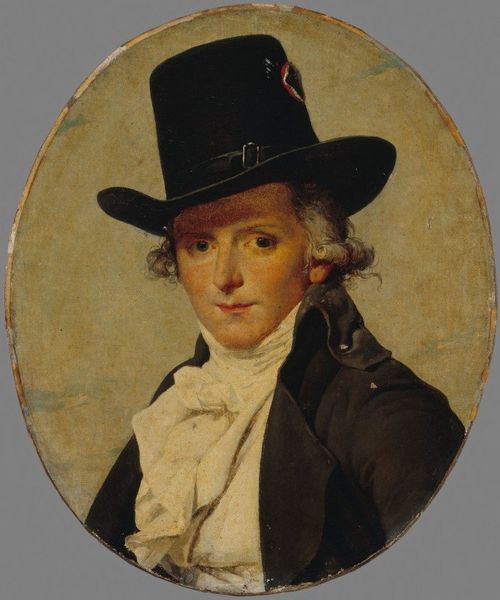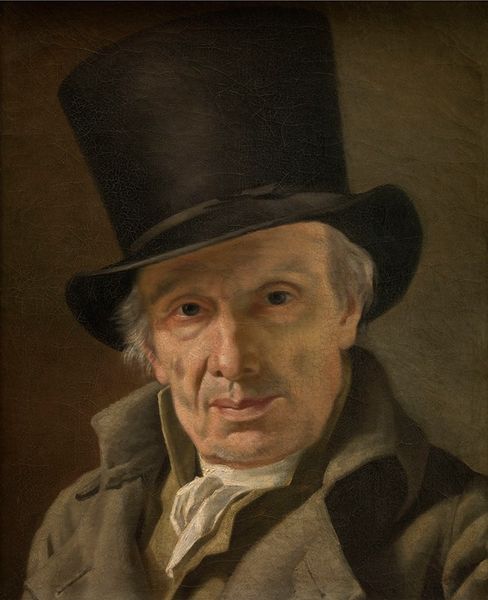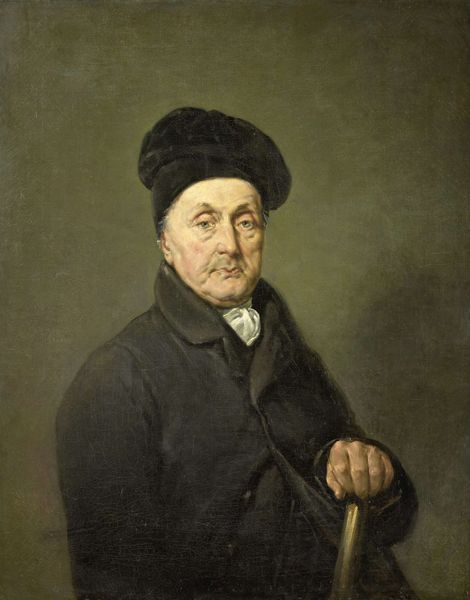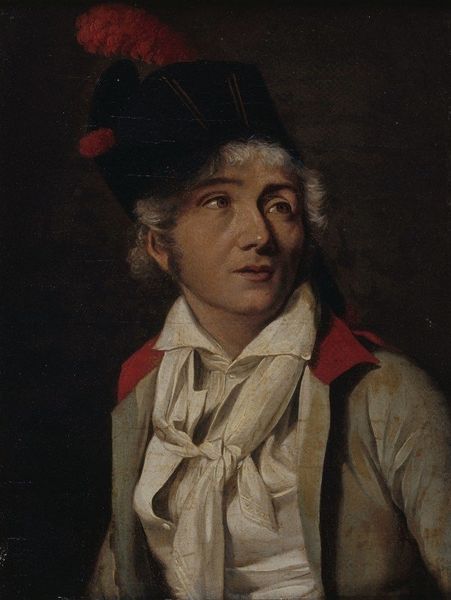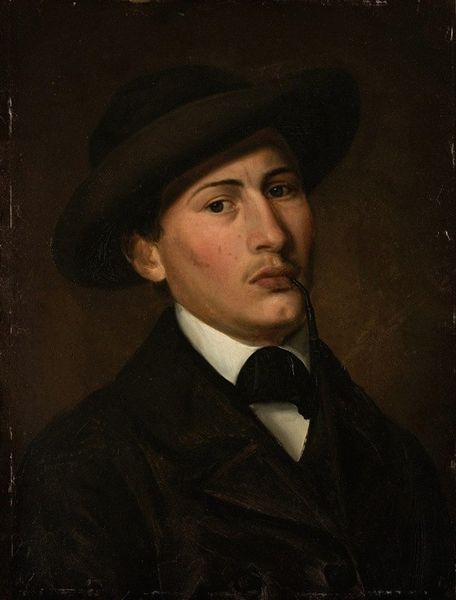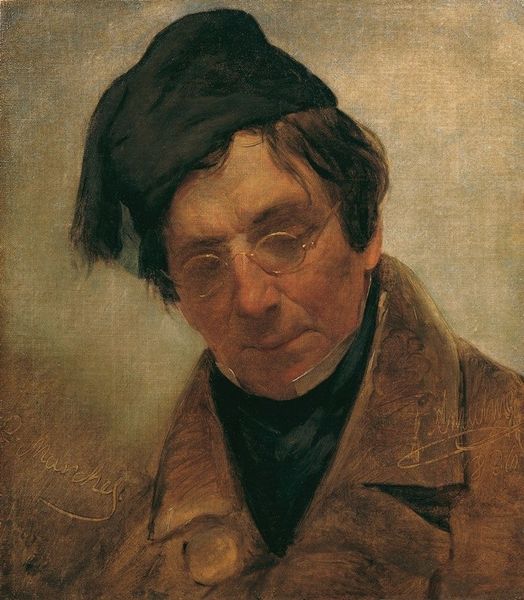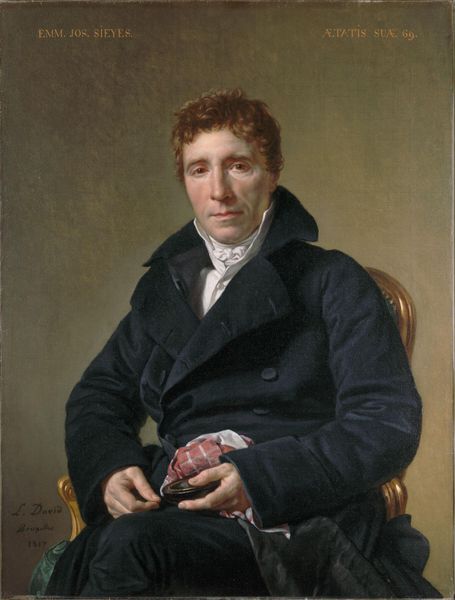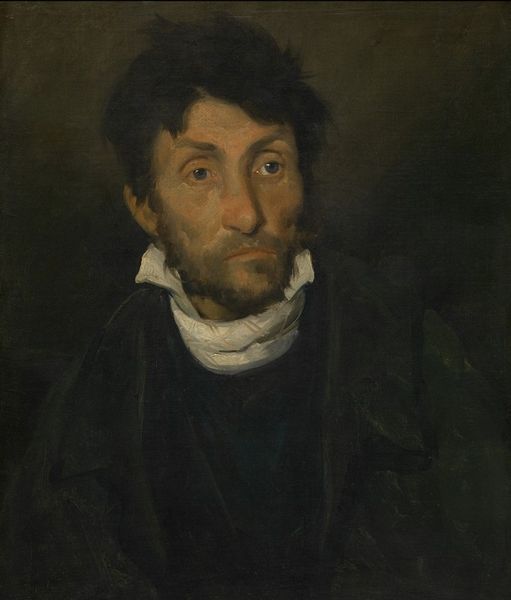
painting, oil-paint
#
portrait
#
painting
#
oil-paint
#
romanticism
#
academic-art
Dimensions: height 78.3 cm, width 62.3 cm, depth 11.2 cm
Copyright: Rijks Museum: Open Domain
Curator: Welcome to the Rijksmuseum. Here we have a portrait of Pieter Barbiers Pz, a painter active between 1748 and 1842. This oil on canvas was created between 1810 and 1830 by Jean Augustin Daiwaille. Editor: He looks rather contemplative, wouldn’t you say? And perhaps a little melancholic. I immediately get a sense of quiet reflection, a man immersed in his craft, though perhaps facing the decline of his years? Curator: Notice how the artist, Daiwaille, meticulously renders the texture of Barbiers' clothing. The way the light catches the folds of his jacket speaks volumes about the textile industry of the time. Look closely; even the brushstrokes detailing the palette are quite deliberate. The physicality of creating art, the labor, is very much on display. Editor: Yes, and it’s interesting to situate Barbiers, another artist, within that tradition of representation. He is an older gentleman. He could be from any number of European upper classes, of the old aristocracy. His presentation, the clothing, it's all carefully crafted to establish his place within the social hierarchy. The artist showing us the painter of the day is almost like showing one’s craft to others in this society. Curator: And consider the context. Daiwaille, likely commissioned to create this portrait, also becomes a cog in a social and industrial machine. There are class and production contexts to all this careful materiality. The palette he is holding makes him part of this artistic elite, an industry really. Editor: Exactly. It’s not just a portrait; it's a visual statement about the role of art and the artist within the social structure, isn’t it? Especially regarding visibility, right, whose stories get told and who gets to tell them. It almost says something about how painting allowed Barbiers social mobility in 19th-century society. Curator: Precisely! That careful documentation of material details – the fine oil paint, the tailored jacket – tells a more expansive story of art-making at that specific time and the structures within it. Editor: Well, looking at it from today, this offers an interesting view into how art was received, who it portrayed, and for what purposes back then. I'm so thankful we are constantly engaging with the intersectionality of history, class, gender, race, and artistic production in this day and age. Curator: Indeed, this one reminds me of the tangible aspects of artistic production and the layers embedded within seemingly simple paintings.
Comments
No comments
Be the first to comment and join the conversation on the ultimate creative platform.

